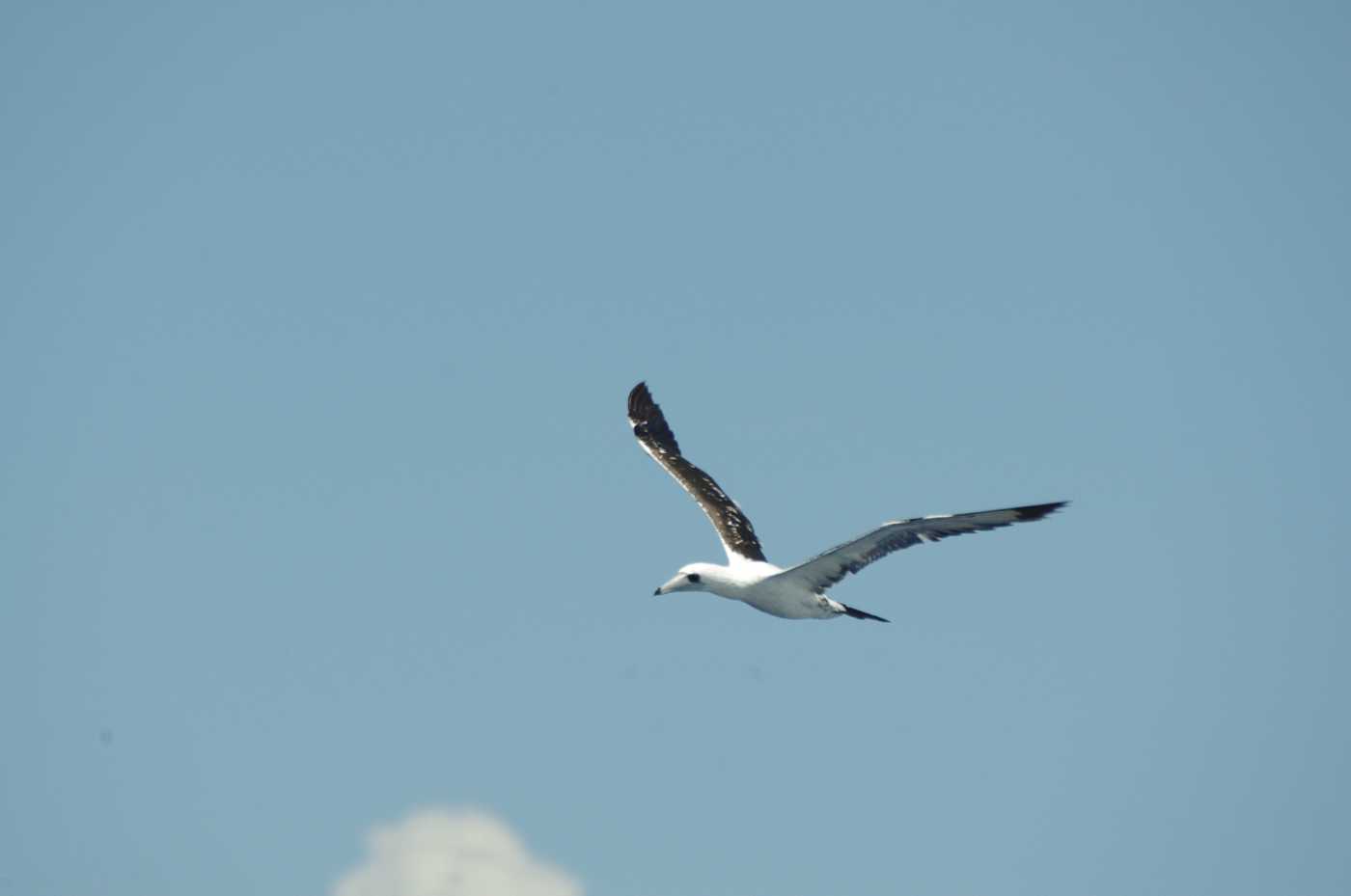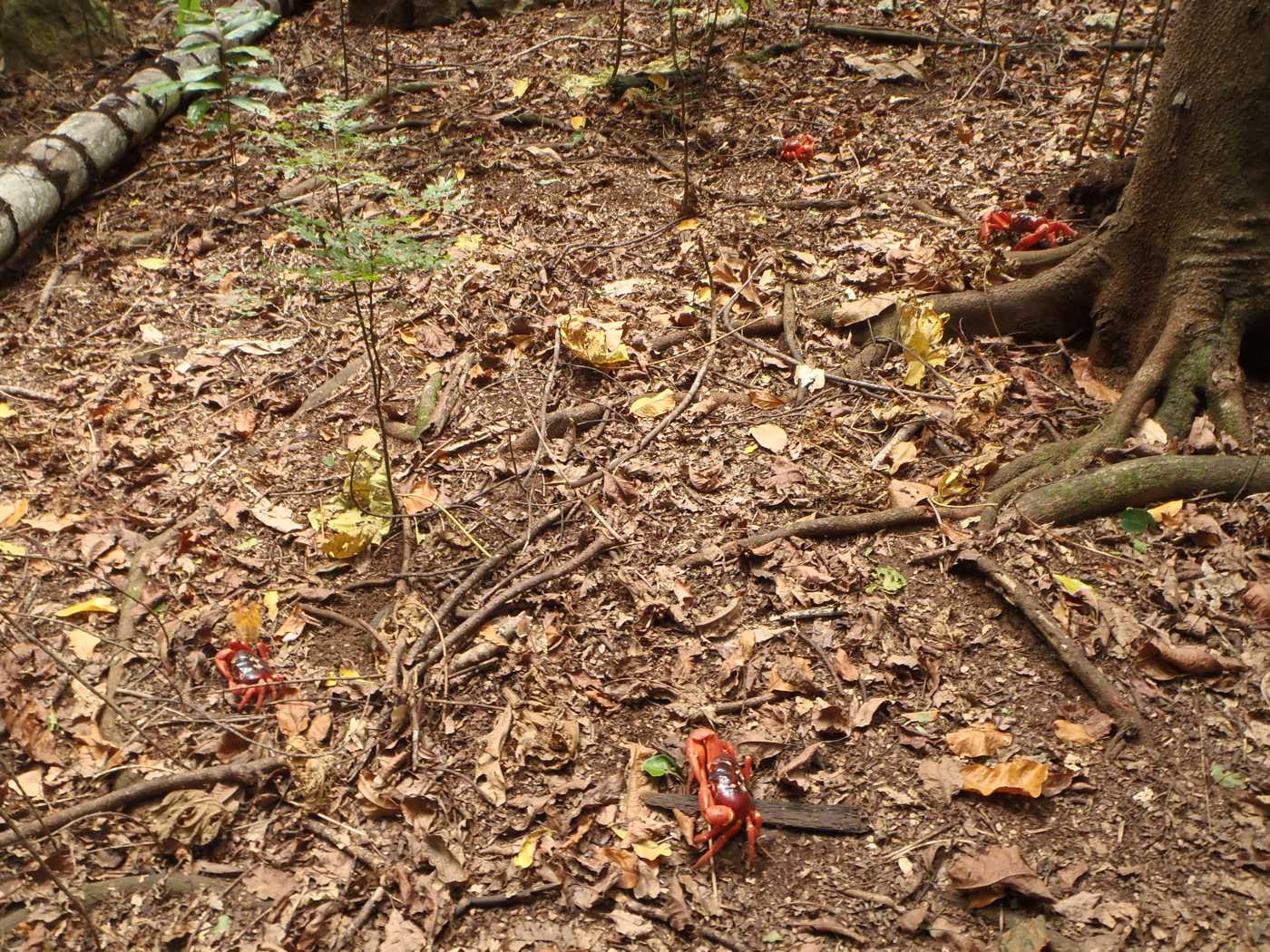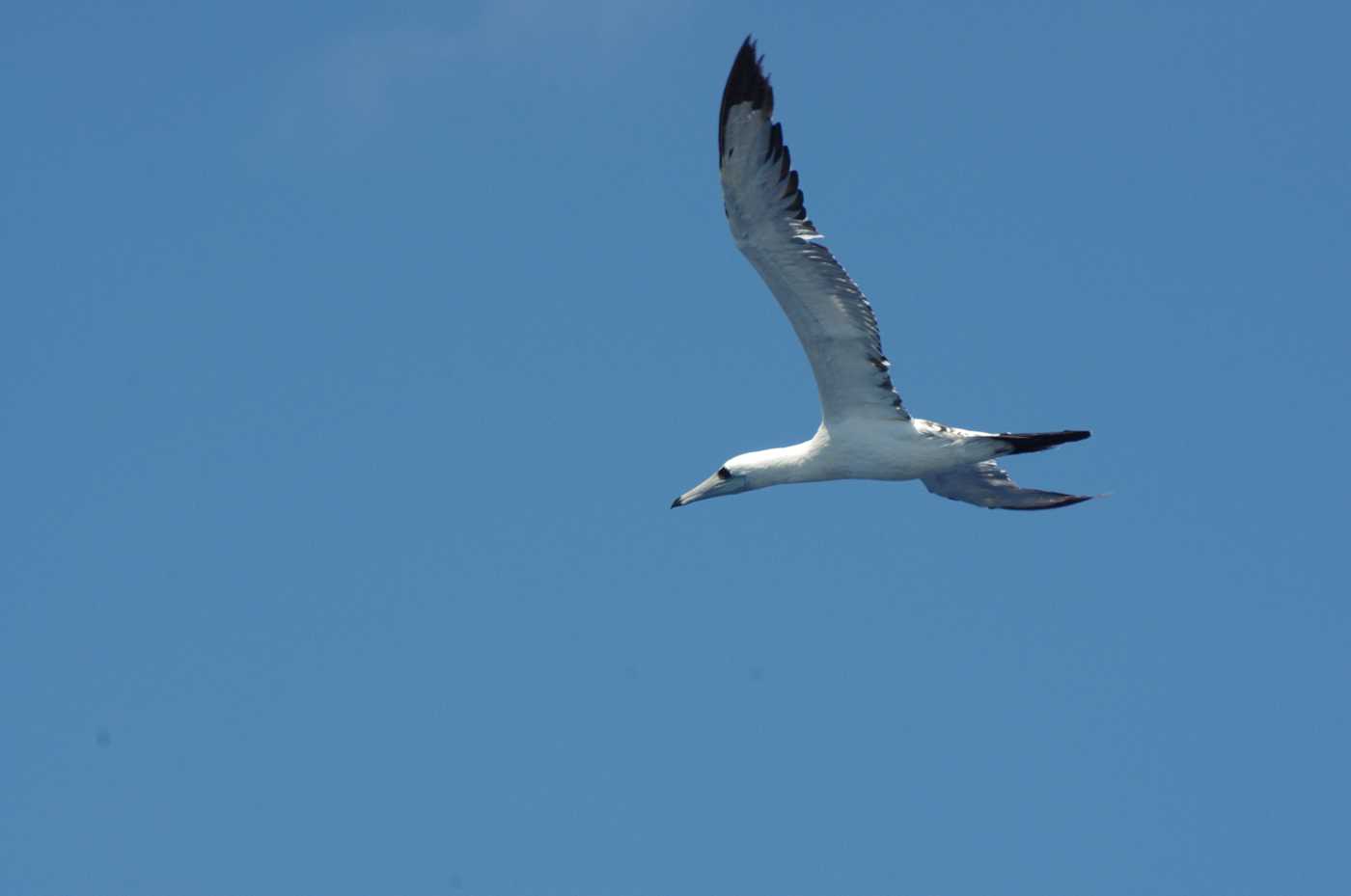I was excited to start my PhD studying seabirds on islands off the north-west coast of Australia because I would be doing research where few birdwatchers ever go. Every field trip had the potential to turn up species rarely sighted in Australian waters. At that stage I knew little about seabirds, but I was keen to make sure I could recall all of the identifying features of most of the species likely to be encountered. I pored over sightings lists compiled by my new lab group during their previous expeditions and scoured the photos they had taken. So it was, on my first field trip, that when one of my new colleagues spotted an unknown object floating in the distance, I knew instantly what it was. It was an Abbott’s Booby – a critically endangered species of seabird which now breeds only on Christmas Island. I was thrilled at what was before my eyes, and ran through the living quarters of the boat yelling, ‘Abbott’s Booby! Abbott’s Booby!’ so that everyone on board got a chance to see one of Australia’s rarest birds.
Seeing an Abbott’s Booby was a special moment for me because it was a bird that I had hoped to see, but thought so unlikely that I didn’t even dare to dream of seeing one. Historically it would have been easier to see an Abbott’s Booby, because in centuries gone by colonies were found on islands scattered throughout the Indian and Pacific Oceans, including the island of Mauritius (infamous as the location where the Dodo once roamed). Sadly, though, by the early twentieth century, Abbott’s Booby colonies had disappeared everywhere except Christmas Island. Today, the global population of Abbott’s Boobies is estimated to be just 2,500 breeding pairs.

The decline of Abbott’s Boobies seen everywhere else was also underway at Christmas Island until the timely establishment of the Christmas Island National Park to protect the bird’s nesting habitat. Unlike the world’s six other species of boobies, which nest on the ground or in low shrubs, Abbott’s Boobies place their nests high in the canopy of tall, evergreen rainforest trees. Until the designation of the national park, clearing of the tropical forests that swathe the island had been rampant at the hands of phosphate miners. Ironically, the droppings of countless generations of Abbott’s Boobies would have contributed to the formation of the rich phosphate deposits that the miners were intent on digging up. This loss of forest left the Abbott’s Booby in a precarious situation. Their nesting habitat was confined to a restricted extent of an already small island. In a region where tropical cyclones can dash large swathes of forest in moments, clearing by humans really had left the eggs of Abbott’s Boobies all in one perilous basket.
For a species perched on a knife edge, any additional pressure would be devastating. Abbott’s Boobies are facing just that. Yellow Crazy Ants, an introduced species, have been present on Christmas Island for about a century. For the majority of their occupation, they had very little in the way of ecological impact. But with the later, accidental introduction of scale insects to Christmas Island, this all changed. As Dr Luke O’Loughlin, who completed a PhD studying the effects of the Yellow Crazy Ant invasion, explains, ‘These sedentary bugs are sucking the sap of rainforest trees and seedlings, and secreting a sugary liquid known as honeydew as a waste product that the Yellow Crazy Ants collect and use to fuel their high-density colonies.’ It is the ready availability of this energy-rich food source that is fundamental to the damage Yellow Crazy Ant super-colonies have wreaked in recent decades.

Super-colonies of this ant species have overrun the endemic Christmas Island Red Crab in many parts of the island, causing changes to the island’s vegetation dynamics. Formerly, the collective feeding on seeds and seedlings by up to 70 million Christmas Island Red Crabs meant that few plants were able to germinate and grow to maturity. As a result, an open rainforest understory was maintained. ‘Since the late 1990s, red land crab numbers have probably declined by around 50% due to Yellow Crazy Ants,’ explains Dr O’Loughlin. Although Yellow Crazy Ants don’t bite or sting, their impact has left many parts of the island devoid of crabs. ‘Ants kill red land crabs by spraying formic acid in their soft body parts, specifically their eyes and mouthparts. It doesn’t take long for crabs to become blinded by this, and eventually die,’ says Dr O’Loughlin.
Without the crabs, the understory in ant-infested areas has become thick and impenetrable. These changes have many flow-on effects for the ecology of Christmas Island, and in the case of Abbott’s Boobies, the concern is that changes in vegetation structure will eventually lead to degradation of the canopy nesting habitat the boobies depend on. Thankfully, studies have yet to find evidence of any impact on the reproductive output of Abbott’s Booby, although the thick understory that is now present in ant-affected areas makes counting the boobies and monitoring their breeding difficult. Nevertheless, successful control of Yellow Crazy Ants is seen as essential in the Australian Federal Government’s recovery plan for Abbott’s Booby.

Although there are many compounding threats facing the Abbott’s Booby, there is hope with respect to the threat posed by Yellow Crazy Ants. In January 2017 a species of wasp, Tachardiaephagus somervillei, was released onto Christmas Island to act as a biological control. It parasitises the Yellow Lac Scale (the scale insect thought to be most influential in the formation of Yellow Crazy Ant super-colonies) and it is hoped that by reducing the abundance of this key source of food for the ants, ant numbers will also fall. Australia has a chequered history with introducing one species to control another, but past failures, such as the Cane Toad, now mean the process occurs only under great scrutiny.


The introduction of this parasitoid wasp to Christmas Island was no exception, and researchers from La Trobe University, Parks Australia, and the Forest Research Institute of Malaysia undertook what is believed to be the most rigorous assessment of any introduction to take place in Australia to date. Ordinarily, only one government body will decide whether a plan to introduce a new biological control agent to Australia gets the go-ahead. ‘We had to go through two separate but parallel approvals processes with two different federal government departments – the Referrals process under the EPBC [Environmental Protection and Biodiversity Conservation] Act with the Department of Environment and Energy, and then a separate process under the Quarantine Act with the Department of Agriculture and Water Resources. It’s the latter through which other biological control agents are typically assessed for import. As far as we know, ours is the only proposal to release a biocontrol agent that has also been assessed under the Referral/EPBC pathway too,’ explains Dr Peter Green, Head of the Department of Ecology, Environment and Evolution at La Trobe University. The following animation prepared by Parks Australia summarises how the introduction of the parasitoid wasp is expected to work on Christmas Island.
After all of the preparation to ensure that the wasp release wouldn’t have any adverse consequences, Dr Green and his colleagues have wasted no time in getting into the field to see if the project has been a success. ‘My Parks Australia colleague is working right now to determine if the wasp has established in the wild at the release sites. She is also monitoring the ants,’ affirms Dr Green. And in response to the question I know you’re all asking, ‘Is it working?’ – ‘Honestly, it’s too early to tell yet,’ he acknowledges. So it seems we will all be eagerly awaiting an update regarding the outcome of this work.
Although the odds may be stacked against Abbott’s Boobies, the dedicated work being done to minimise the threat posed by invasive Yellow Crazy Ants is a heartening reminder that we can make positive change. Many other Australian bird species are threatened by invasive species. From the Norfolk Island Green Parrot threatened by predation of chicks and eggs by Black Rats and cats, to the Baudin’s Black Cockatoo competing for limited nest hollows with feral honey bees, some are receiving assistance similar to the Abbott’s Booby, whereas for others the pervasive effects of invasive species seem insurmountable. In the case of the Abbott’s Booby, efforts such as the introduction of a biological control agent make me optimistic that, long into the future, many others who venture into the waters off Australia’s north-west coast will also be fortunate enough to experience the sheer excitement of seeing this remarkable bird.
Banner image courtesy of Rowan Mott: An Abbott’s Booby in flight is a truly remarkable sight. Their resemblance to a pterodactyl adds to the excitement of the incredible rarity of sightings of this species at sea.


Leave a Reply